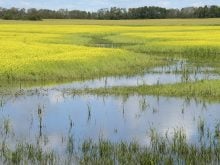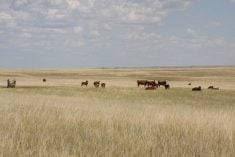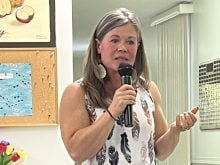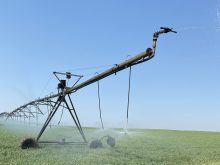The first phase of a three-phase megaproject in province’s Lake Diefenbaker region could begin construction next year
REGINA — Rehabilitating the Westside Irrigation Project at Lake Diefenbaker will boost gross domestic product by at least $5.9 billion over 50 years, according to the Saskatchewan government.
The economic analysis of the proposed project, the first of three, was done by KPMG LLP and released Sept. 26.
It said the $1.15 billion project will generate 30,000 person years of employment and 9,500 construction jobs while adding 90,000 acres of irrigation. Tax revenue to governments is conservatively projected at $770 million with value added processing.
Read Also

Russian wheat exports start to pick up the pace
Russia has had a slow start for its 2025-26 wheat export program, but the pace is starting to pick up and that is a bearish factor for prices.
Further GDP benefits are expected as more processing comes on stream.
“To the extent that additional food manufacturing investments occur in Saskatchewan directly as a result of this project, the incremental impacts could be even greater, ranging from a GDP impact of as low of $3.2 billion without any food manufacturing to as high as $8.6 billion with a more favourable outcome,” the report said.
Saskatchewan agriculture minister David Marit, minister responsible for the Water Security Agency, said the project is well worth the cost.
“KPMG is probably being very conservative on the estimates,” he said.
“And I think when this project gets up and running, to add those kinds of acres to the whole region is going to have a big impact on the value added side.”
Value added is probably where KPMG, and others, have a hard time quantifying the impact, he said.
About 20,000 acres have gone under irrigation in each of the last two years even without the large project, he added.
Marit used the example of one irrigator who grew a quarter-section of carrots, under contract, and employed 13 people.
They are temporary foreign workers who from April until harvest are living in the community.
“I don’t know how you put a dollar value on (their rent) or what they’re buying,” Marit said.
Another irrigator has eight full-time employees for three quarters of potatoes. He told Marit he needed a full-time electrician, and if there is more irrigation, then that electrician will need to hire more people.
Marit said other landowners with irrigation will add high-value crops and further processing, changing the dynamic in the province.
He said water shortages south of the international border could also present opportunities for food processing near Lake Diefenbaker, which contains more water than all of Alberta’s reservoirs combined.
Companies may decide to locate in a region where they can be assured of water supply, he added.
Provincial livestock organizations have said the irrigation project is critical for their industry to develop more feed and feeding capacity.
KPMG’s analysis looks at the most recent project design after four years of preliminary work, including feasibility studies and business cases. The Westside Irrigation Rehabilitation Project would include refurbishing a major pumping station, building a balancing reservoir near Conquest for off-peak storage and supply, rehabilitation and lining of the existing 45-kilometre west main canal to the new reservoir, possible expansion of the canal northeast of the reservoir toward Ardath-Swanson, pressurized and gravity buried pipeline and smaller pump stations to take water to the edge of producers’ fields, and instrumentation, controls, communications and a reporting device to connect, operate and control the components.
The estimated annual operating costs would be $4.7 million, while lifecycle costs, at an average 1.7 per cent per year of total development costs, would be about $20 million per year.
The report identifies several risks, including higher costs, permitting and environmental approvals, funding arrangements and food manufacturing investment.
Based on the work done to date, the WIRP will also include the Vanscoy portion of the Westside Expansion Project. WEP is expected to be the second phase, followed by the Qu’Appelle South Water Conveyance Project.
A cost-share arrangement for landowners who want to participate in the WIRP has not yet been established. Construction could begin in 2025.
The province still hopes for a federal contribution to the project, Marit added.
















